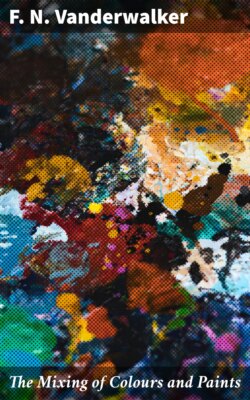Читать книгу The Mixing of Colours and Paints - F. N. Vanderwalker - Страница 10
LAKE COLORS
ОглавлениеPainters and decorators in the building trades do not have occasion to use many of the lake colors except for decorating in the fine arts, although rose lake, rose pink and Dutch pink, lake colors, are rather generally known. Automobile and carriage painters use lakes extensively for high class work, and decorative artists also use them.
Lakes are made by a variety of manufacturing processes. Generally speaking, they consist of organic color united with metallic and mineral bases as definite compounds. The name—lakes—is rather odd and not at all descriptive, but it probably just happened from the practice of artists and craftsmen hundreds of years ago who used the dried scum skimmed off the top of "lac" dye vats.
Natural dyes extracted from woods and vegetation of various kinds at first constituted the organic portion of lake pigments—Brazil wood, sapanwood, parnambuc, oak bark, quercitron, fustic, lac and cochineal from insects were commonly used. The modern manufacturing processes use aniline colors from coal tar principally for the organic part of lake colors, although some dyes of vegetable origin are still in use to some extent.
The mineral or metallic bases for lake colors are alumina, tin, lead and chromium in solution.
By way of illustration, rose lake, rose pink and Vienna lake are made by cutting into chips the wood and bark of Brazilwood, sapanwood or parnambuc from South America. These woods contain, when fresh, a dye substance called brazilein. The chips are permitted to dry out thoroughly and by this oxidizing the dye color is made available. The chips are next placed in large steel cylinders and subjected to the action of steam under pressure. The colored liquor thus extracted is allowed to stand so all sediment and foreign particles may be taken out by settlement and by filtering.
The clear liquor is mixed with alum or tin. Carbonate of lime is used in making cheaper lakes. From this mixture a clear, fine transparent and rich wine-colored pigment is precipitated. The color is then separated from the liquid by filtering and drying. When ground with oil, Japan or water it is ready for the trade.
This group of lakes is valuable principally to artists, decorators, furniture finishers and automobile painters. They must be protected by varnish or other transparent coatings, as they are too fugitive for outside exposure. It is difficult to find anything to equal them for rich wine, maroon and pink tints.
Dutch pink isn't pink at all, but a transparent yellow lake. It is made of the extract from oak bark or quercitron precipitated by alum on a base of carbonate of lime. The peculiar quality of Dutch pink is that it retains its yellow tone at night even when subjected to gas light. It produces greens and olives which also retain their tones in artificial light.
The more expensive lakes of this group—Carmine and madder—cost too much to be used in quantity, or for any except decorative purposes where small amounts are needed.
